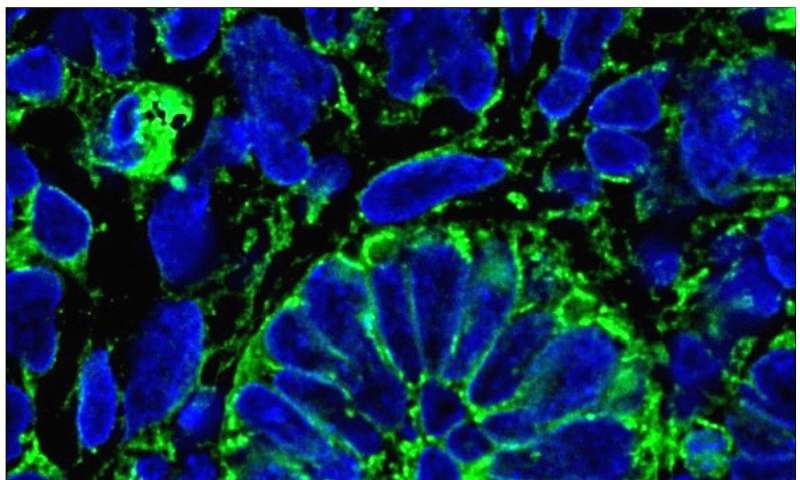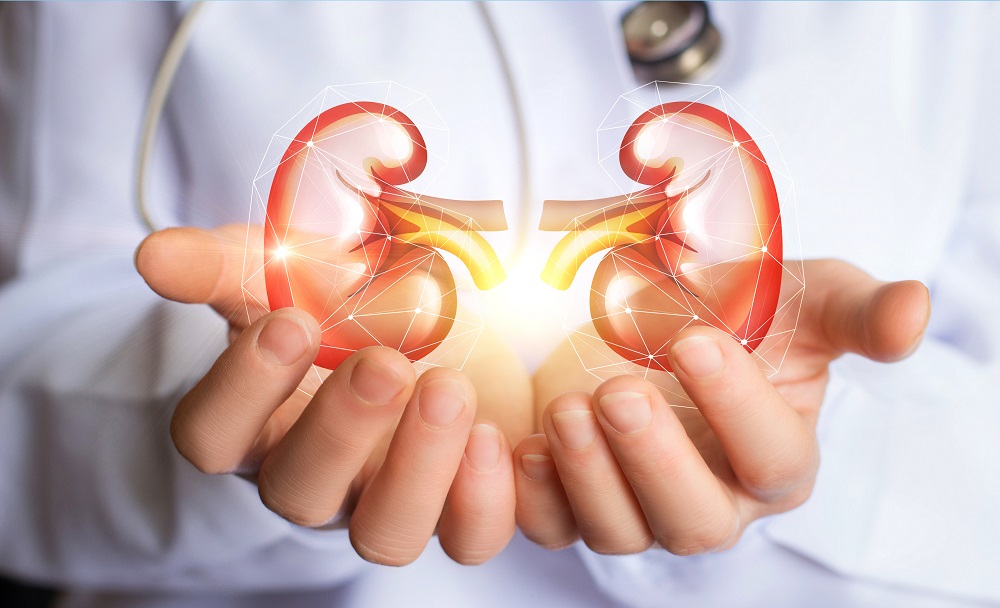Researchers Create Functioning Human Kidney Tissue
Summary: In a first for medical science, researchers in the UK have successfully created functioning human kidney tissue, growing mini kidneys that produce urine. [This article has been updated on March 8, 2018, and first appeared on LongevityFacts. Author: Brady Hartman. ]
In a first for medical science, researchers have successfully created human kidney tissue within a living organism which can produce urine.
The study led by professor Sue Kimber and professor Adrian Woolf from the University of Manchester in the UK marks a significant milestone in the development of kidney disease treatments. The scientists published their results on February 8 in the journal Stem Cell Reports.

How Scientists Created Functioning Kidney Tissue
The team generated kidney glomeruli from human embryonic stem cells, using a technique to create induced pluripotent stem cells (iPSCs). The researchers then grew these in plastic laboratory culture dishes with nutrients that promote kidney development.
After raising the tiny kidney cells, the scientists combined them with a gel-like substance, which acted as natural connective tissue—and then injected them as a clump under the skin of mice.
History is Written on the Backs of Mice
The researchers examined the mice after three months, to discover that functioning nephrons had formed. Nephrons are functional units that carry out the major duties of the kidney. In essence, the team had successfully created functioning kidney tissue.
The newly-formed structures on the mice contained most of the components present in naturally-grown human nephrons—including distal tubules, proximal tubules, Bowman’s capsules and Loop of Henle.
Moreover, capillaries had sprung up to nourish the newly grown kidney tissue.
Lacking a Major Supplier
However, the researchers noticed that these new structures lacked a large artery. Without such a blood supply, the function of a mini-kidney will be a fraction of normal.
To overcome this limitation, the team from the University of Manchester are collaborating with surgeons to install an artery that will supply more blood to the functioning kidney tissue.
How to Test Kidneys?
To test the functionality of the newly grown mini-kidneys, the team used a fluorescent protein called Dextran which stains glomerular filtrate, as a telltale sign. Healthy nephrons produce glomerular filtrate when they filter the blood.
The researchers tracked the telltale Dextran and detected it in the tubules of the new mini-kidneys, indicating they were producing the filtrate and excreting it as urine. As Professor Kimber says,
“We have proved beyond any doubt these structures function as kidney cells by filtering blood and producing urine—though we can’t yet say what percentage of function exists,” adding “What is particularly exciting is that the structures are made of human cells which developed an excellent capillary blood supply, becoming linked to the vasculature of the mouse.” Kimber continued, “Though this structure was formed from several hundred glomeruli, and humans have about a million in their kidneys—this is clearly a major advance.” Finishing with “It constitutes a proof of principle- but much work is yet to be done.”
Woolf’s Outlook
Professor Adrian Woolf, who played a key role in the study, is excited about the accomplishment, saying it holds promise for generating kidneys from scratch. Woolf is a consultant in Pediatric Nephrology at the Royal Manchester Children’s Hospital at Manchester University who says,
“Worldwide, two million people are being treated with dialysis or transplantation for kidney failure, and sadly another two million die each year, unable to access these treatments.” Adding “So we are tremendously excited by this discovery—we feel it is a big research milestone which may one day help patients.” And finishing with “However, there is much more to learn: Building on our generation of kidney filtration units we must now turn to developing an exit route for the urine and a way to deliver this technology to diseased kidneys.”
Chronic Kidney Disease
More than 30 million American adults may have chronic kidney disease (CKD), according to a June 2017 report, by the National Institute of Diabetes and Digestive and Kidney Diseases (NIDDK). The NIDDK adds that type 2 diabetes is the leading cause of CKD, followed by high blood pressure, heart disease and a family history of kidney disease. The NIDDK points out that ‘Almost 1 in 3 people with diabetes has CKD.’ High blood pressure is not far behind, as the government agency adds that ‘Almost 1 in 5 adults with high blood pressure has CKD.’
The NIDDK adds that ‘You can protect your kidneys by preventing or managing health conditions that cause kidney damage, such as diabetes and high blood pressure.’
Related: Company wants to bioprint new beating hearts from our own cells.
Like This Article?
- Share this post on social media and help us spread the word– It only takes one click on any of the social media links on this page.
- Follow us on social media – Google+ or Reddit
- Sign up for our email list – We use your email to notify you of new articles. We will not send you spam, and we will not share your email address. You can cancel at any time.
- Tell us what you think – Scroll down to enter your comments below.
References / Credits
Cover photo credit: Natali_Mis / Getty Images(iStock).
Michael Addelman. “Scientists create functioning kidney tissue.” The University of Manchester. February 9, 2018. Link to the press release in MedicalXpress.
Ioannis Bantounas et al. “Generation of Functioning Nephrons by Implanting Human Pluripotent Stem Cell-Derived Kidney Progenitors.” Stem Cell Reports. Volume 0, Issue 0. February 8, 2018. Link to article in Cell.
Disclaimer
Diagnosis, Treatment, and Advice: This news article is intended for informational and educational, and purposes only and is not a substitute for qualified, professional medical advice. The opinions and information provided herein should not be used during any medical emergency or for the diagnosis or treatment of any medical condition. Consult a qualified and licensed physician for the diagnosis and treatment of any and all medical conditions. Experimental treatments carry a much higher risk than FDA-approved ones. Dial 9-1-1, or an equivalent emergency hotline number, for all medical emergencies. As well, consult a licensed, qualified physician before changing your diet, supplement or exercise programs.
Photos, Endorsements, & External Links: This article is not intended to endorse organizations, companies, or their products. Links to external websites, mention or depiction of company names or brands, are intended for illustration only and do not constitute endorsements.

One Reply to “Researchers Create Functioning Human Kidney Tissue”
Comments are closed.